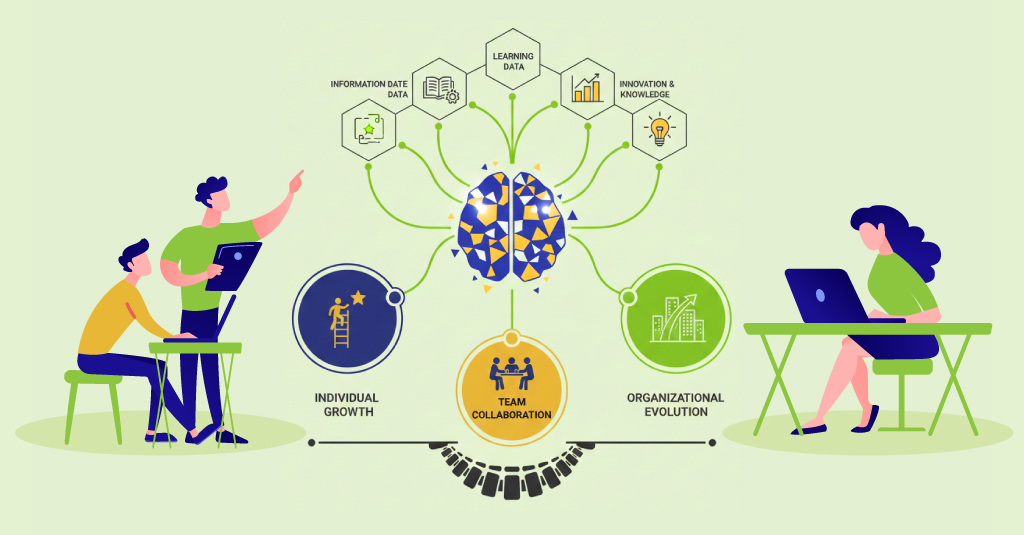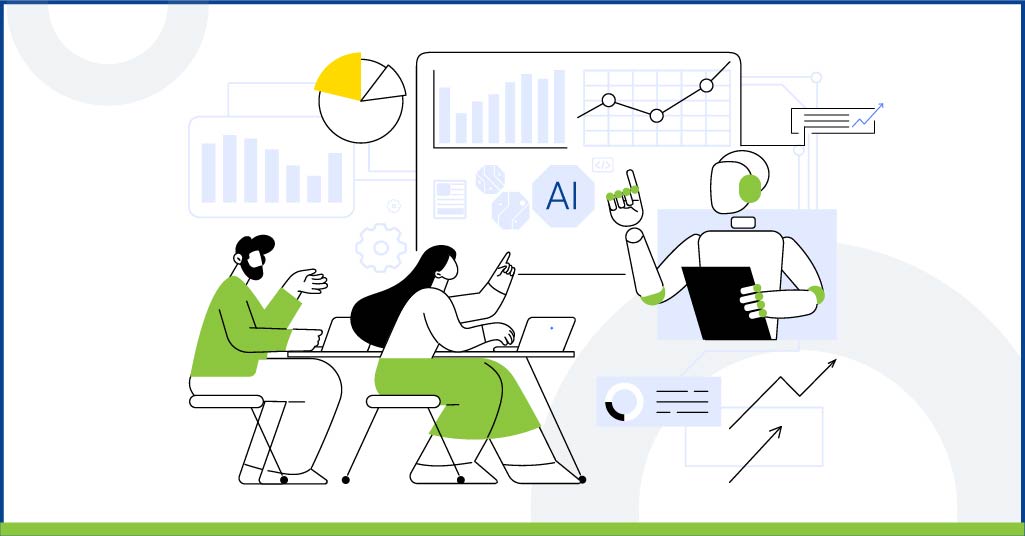Most corporate learning programs fail quietly. Not because the design is poor, but because the vendor selection was reactive. Budgets close, timelines compress, and the team picks whoever fits the brief fastest. A typical RFP runs on checklists- experience, tools, cost, delivery time. All valid, but partial. What it does not capture is how a vendor actually works once the contract begins.
Learning is a production system. Each vendor carries a distinct production logic. Some optimize for speed, some for volume, some for depth. When those logics do not align with the organization’s learning culture, friction appears. Modules stall mid-development. Review cycles loop. The course looks fine but misses intent. It happens not from negligence but from mismatch.
Procurement tends to see vendor selection as a transaction. L&D leaders see it differently. It decides how ideas move through people, platforms, and review chains. And how fast those ideas turn into usable training.

What Defines a “Custom” eLearning Partner
The term “custom” is misleading. It suggests a blank slate, a high degree of flexibility. In practice, most vendors offer semi-custom solutions- template frameworks adapted with branding and limited logic changes. True custom work involves structural design: workflow mapping, skill architecture, learner profiling, and content intelligence.
Enterprises rarely need full customization. What they need is context-fit. A vendor who can read the business structure fast and translate it into learning architecture. Not everything must be built from scratch. What matters is whether the vendor knows what to reuse and what not to.
For instance, if a compliance module needs to integrate with an existing risk dashboard, the vendor must understand not just SCORM but data flow between LMS and HRIS. Many “custom” providers still operate in isolation from enterprise systems. The outcome is friction during rollout- manual uploads, broken tracking, misaligned reports.
Customization, then, is not about creative freedom. It is about architectural alignment. The right vendor spends more time on the blueprint than on the first storyboard.

Where Most Vendor Evaluations Go Wrong
Most evaluation matrices reward presentation skills. Clean slides, reference projects, familiar tools. But the real differentiator sits in production depth. How does the vendor handle iterative feedback? What QA process sits behind visual design? How do they ensure consistency across multiple IDs or developers?
Few organizations probe these layers. The assumption is that standard SOPs exist. But many vendors rely on ad hoc coordination between designers and developers. No shared review logic, no fixed file-naming, inconsistent SME communication. When scaled across a global L&D ecosystem, those gaps multiply.
Even strong vendors can underperform if they are over-scoped. A mid-tier vendor can deliver fast and lean if project governance is tight. The same vendor can collapse under enterprise-scale documentation. Evaluation, therefore, should look at scale matching. Not who can do the most, but who can do this- under current constraints, with current systems.

What to Check Before Signing a Vendor
Due diligence in L&D is more operational than legal. The contract protects budget; the process defines outcome. A few factors quietly determine success:
-
Workflow Transparency: Does the vendor share their full workflow model? Not just milestones, but dependencies- design, media, QA, deployment.
-
Team Continuity: Are the same people who pitch also executing? Vendor switching within teams often resets context.
-
Tool Compatibility: Is the authoring stack compatible with the organization’s current LMS and data reporting formats?
-
Version Control: Many content breakdowns happen from outdated versions. A vendor’s internal versioning method is a proxy for their discipline.
-
Review Logic: How does feedback move? Email chains or tracked dashboards? The latter cuts turnaround time by half in most cases.
Organizations assume these are post-contract details. They are not. These are the difference between a 12-week delivery and a 6-week one.

How AI Is Changing Vendor Capabilities
AI has begun to separate production vendors from design vendors. A decade ago, the difference was minor. Now it is structural. Vendors with integrated AI pipelines can compress scripting, media, and localization phases simultaneously. Not by replacing humans, but by collapsing sequence dependency.
For example, AI-assisted media generation allows design and voice production to run parallel to content approval. Instead of waiting for a final storyboard, the system iterates in sync. It changes cost behavior- not by discounting, but by shortening cycle time.
Some vendors have started using AI-powered learning platforms internally for analysis and testing. They simulate learner behavior before rollout, identifying weak engagement points early. This kind of predictive QA was impossible with manual testing.
The real impact, however, lies in workflow design. Vendors who build AI into their process can iterate 3x faster without compromising compliance checks. But speed alone is not advantage. What matters is integration- how AI tools align with corporate review hierarchies, data privacy policies, and LMS governance.
Not all vendors are equipped for this. Many experiment on the surface- using AI for copy generation but not for structural optimization. Selecting a vendor today requires understanding how AI sits within their development logic, not just in their sales pitch.

How to Evaluate Cost vs. Value in Custom eLearning
Price comparisons look simple on paper. In practice, they hide more than they reveal. The quoted rate per learning minute or module often excludes factors that define the real cost of delivery. A better approach is to unpack where value actually lives.
-
Throughput, Not Volume: Measure how much usable learning content is produced per project cycle. A 30-minute course completed in 4 weeks can be more efficient than a 45-minute one that takes 10 weeks. The metric is not duration - it’s usable learning per production week.
-
Rework and Internal Lag: Each revision or SME review adds hidden cost. Vendor models that reduce rework through structured feedback loops save far more than a lower quoted rate.
-
Integration Overhead: If the vendor’s content needs manual LMS uploads, reformatting, or reporting adjustments, the internal cost rises sharply. Seamless integration is financial efficiency.
-
Scalability Without Dilution: The right vendor maintains quality when volume increases. Scaling without governance loss is a form of value often missed in early pricing discussions.
-
Outcome-Based Pricing: Some enterprises now align payment milestones with adoption or completion metrics. Vendors confident in their process maturity often agree to this model- and usually perform better under it.
A vendor’s price matters, but cost behavior over time matters more. In large programs, efficiency compounds quietly. Those who measure value by throughput and friction, not hourly rates, make better long-term choices.

How Upside Learning Fits Into This Framework
Upside Learning has positioned itself in the intersection of scale and precision. It operates with a modular production structure, balancing human expertise and AI-assisted workflows. Its systems focus on collapsing non-creative time- the intervals between design, approval, and deployment.
Projects often integrate AI-driven media synthesis, automated translation layers, and behavior-mapped QA systems. This shortens average project turnaround from months to weeks without reducing quality or governance compliance.
Unlike template-based providers, Upside’s model emphasizes architectural fit. It begins with a diagnostic of client systems- LMS compatibility, review cadence, SME bandwidth- and builds the workflow around those realities.
This approach also extends beyond content creation into performance consulting , aligning learning architecture with measurable performance outcomes
In recent projects, Upside Learning has used AI-powered learning analytics to simulate learner engagement before deployment, refining module flow before it reaches production. That kind of pre-emptive validation cuts error loops significantly.
Its approach reflects an understanding that “custom” is not about novelty; it is about operational accuracy. A vendor that maps learning architecture correctly the first time rarely needs rework.

The Real Measure of a Good Vendor
No single metric defines the right vendor. Not delivery speed. Not price. Not the number of past clients. What defines value is the stability of collaboration- the ability to sustain consistent quality across cycles, across people, across contexts.
Good vendors do not market innovation; they maintain predictability. They integrate into the enterprise rhythm without adding administrative load. They reduce the noise in review loops, track decisions clearly, and keep content pipelines moving when projects scale.
In enterprise learning, predictability is underrated. It is not glamorous. It does not headline product brochures. But it decides which programs survive the fiscal year and which stay in backlog.
And that is ultimately the quiet distinction between a vendor who builds learning and one who sustains it.
If you’re exploring how to choose or work with the right custom eLearning partner, Upside Learning can help. Get in touch to start the conversation.
FAQs: Custom vs. Off-the-Shelf eLearning
If your workflows, tools, or brand vibe are one-of-a-kind- or if behavior change matters- custom’s your cheat code.
Yep, upfront it’s lighter on the wallet. But for long-term wins and role-specific skills? Custom flexes harder ROI.
For sure. Start with off-the-shelf for the basics, then sprinkle in custom modules where it really counts.
Depends on how ambitious you get- usually weeks to months. Planning ahead keeps you from sweating deadlines.
For general topics, yeah. For real-life scenarios or changing habits? Engagement can ghost you.
Totally. You own the content, so edits, tweaks, or upgrades? All yours.
Custom can adapt paths, toss in interactive exercises, and mix multimedia to match every brain type.
Mostly basic stuff- completion rates, quiz scores. Custom digs deeper: behavior, skill gaps, all the good analytics.
Quick wins? Off-the-shelf. Lasting change? Custom. Pick your lane- or flex both.
Yep. They make it seamless- fast deployment, tailored experiences, or a mashup.

Pick Smart, Train Better
Picking off-the-shelf or custom eLearning? Don’t stress. It’s really about your team, your goals, and the impact you want. Quick wins? Off-the-shelf has you covered. Role-specific skills or behavior change? Custom eLearning is your move.
Upside Learning makes both options effortless. Whether it’s ready-to-roll courses or fully tailored experiences, we handle the heavy lifting- interactive modules, adaptive paths, branded visuals, and analytics that tell you something. No wasted time, no generic content- just learning that sticks.
Ready to level up your team’s learning game? Connect with Upside Learning today and see how we make training fast, engaging, and results-driven. Your team deserves training that works- and we deliver.



















